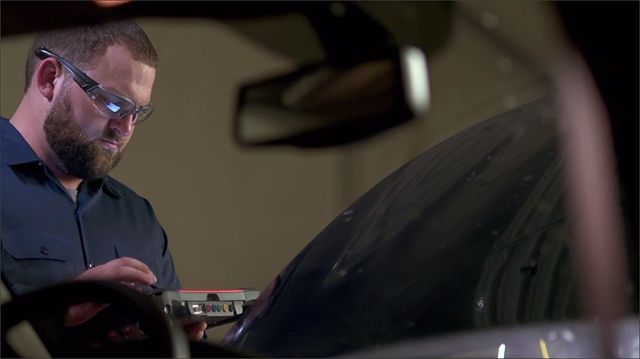Read on to find out how this simple procedure within Snap-on's diagnostic platforms is a great starting point for your diagnostic process.
If a vehicle comes into the workshop and you suspect – having spoken to its owner to get a bit of a guide on the problem it has – that an electrical issue could be at the root, the Alternator Ripple Test (ART) is a great starting point for your diagnostic process.
Snap-on’s handheld diagnostic tools make running an ART a simple enough course of action thanks to the Top Level Menu (TLM) system, which is one of the most powerful features contained in the Guided Component Tests on each tool in the VERUS and MODIS product ranges.
The TLM gives the user all sorts of test tips and is one of the most advanced parts of the handheld tools, yet at the same time is very simple and straightforward for a technician to work with.
Let’s take a look at how to access and run the ART using the Snap-on VERUS Edge scan tool.
From the tool’s homepage click on the Guided Component Tests option, then the Menu button at the bottom of the screen.
A list of options then opens up so click Top Level Menus, followed by How To, and select Test Tips to pull up a page of tests you can run – the ART is the first one on the list.
Once the test has loaded the page is broken down into different sections, each of which contains important information, and the second of those sections shows you how to connect the unit to the vehicle in order to run the test.
If you scroll the page down further you will see examples of good alternator patterns and also bad ones.
View data on the VERUS Edge
Click on the View Meter option next to any of those examples to display the alternator meter for the vehicle you are testing, then start the vehicle up to send data through to the VERUS Edge.
What you want to see when comparing the live meter to the examples is a series of nice and even bumps with a regular flow.
Anything else, for example the bumps being followed by a big drop-out on the meter, suggests an issue with the alternator.
If you do suspect an electrical problem in the vehicle then running the ART should be one of the first things to do because bad results there that haven’t been picked up can have a knock-on effect on the rest of your diagnostic work.
And with how simple it is using one of Snap-on’s tools it really shouldn’t be something you overlook.

Date posted: 11 April 2018